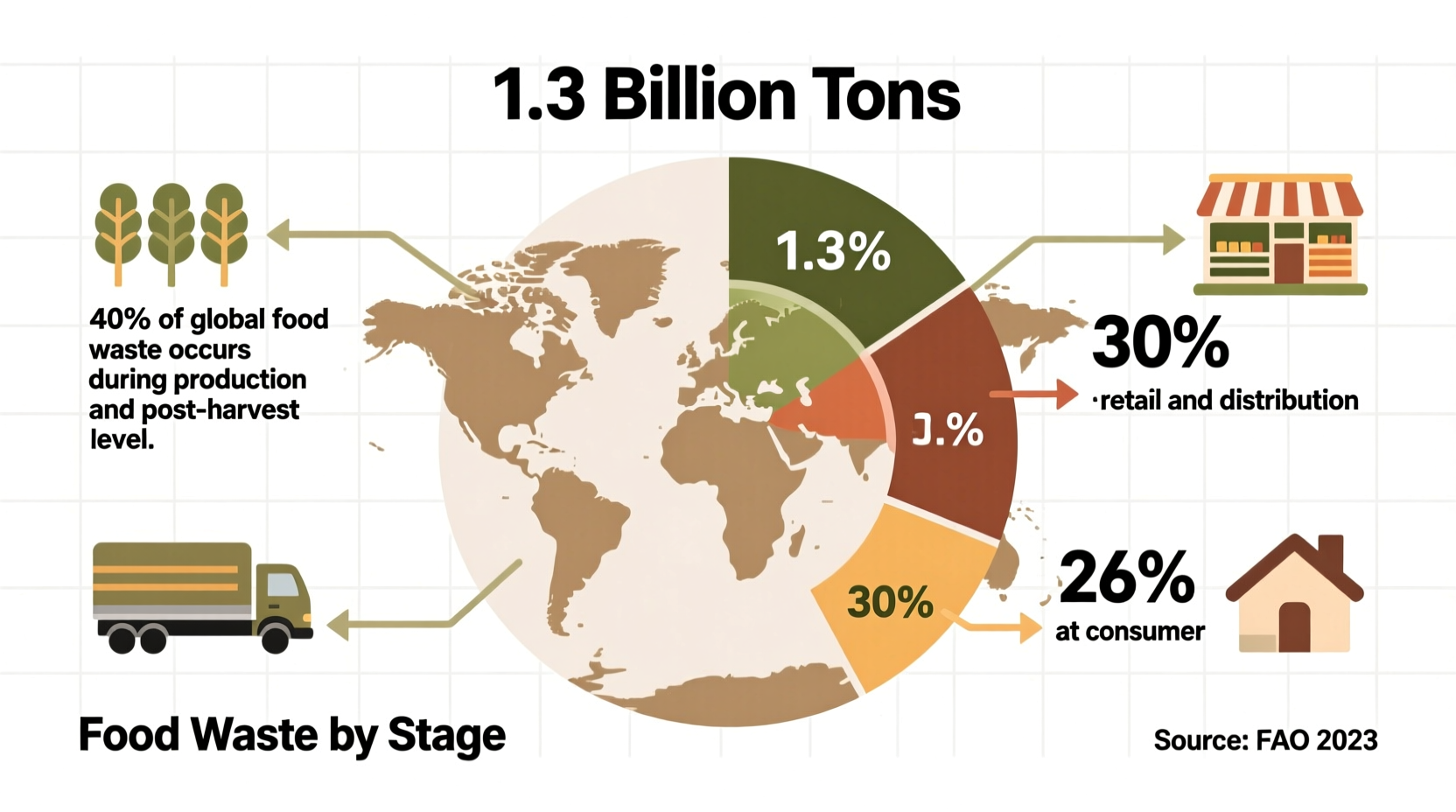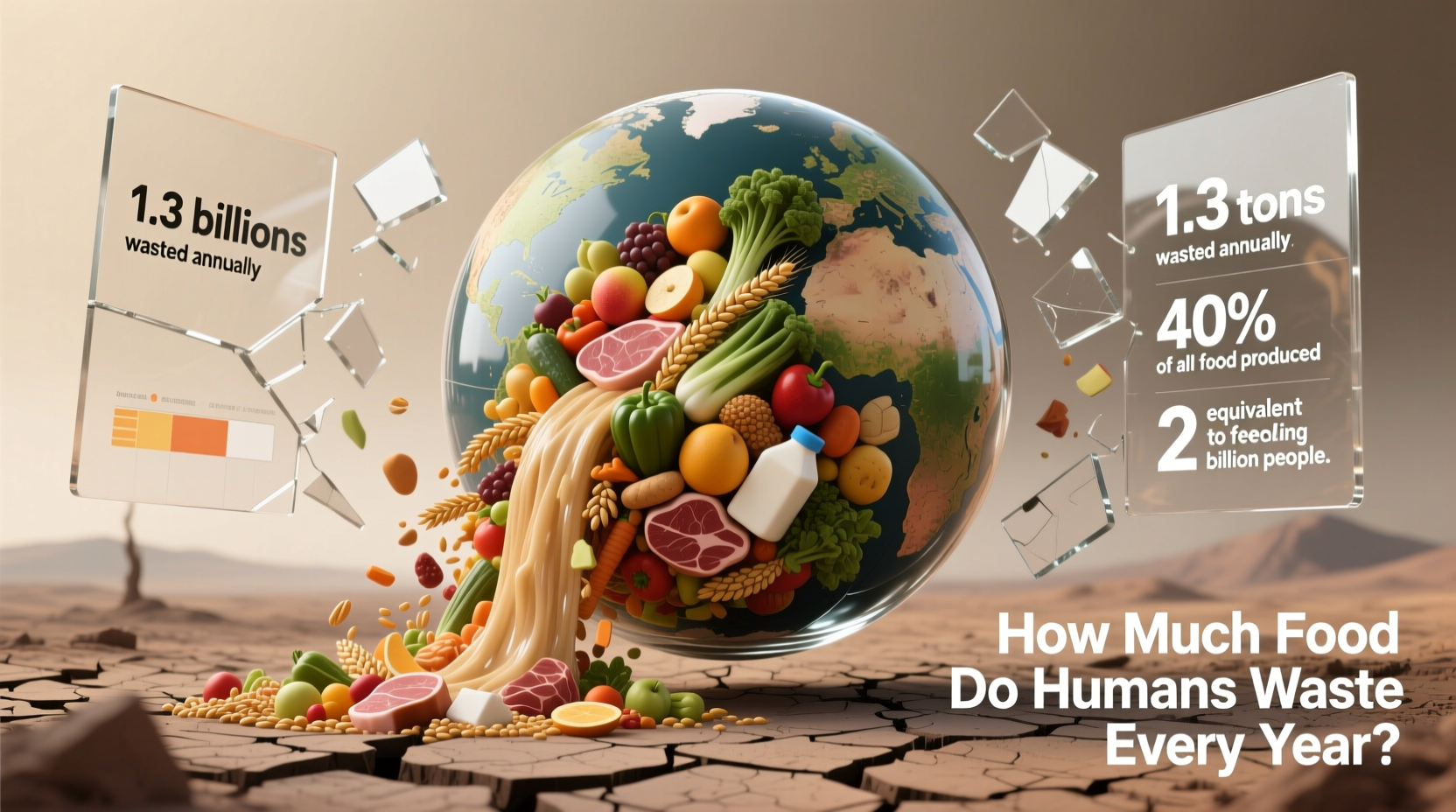Understanding the scale of global food waste isn't just about numbers—it's about recognizing a critical opportunity to address hunger, conserve resources, and combat climate change. When you consider that nearly one-third of all food produced for human consumption gets lost or wasted, the implications become clear: we're squandering not just food, but the water, land, energy, and labor that went into producing it.
The Most Current Global Food Waste Statistics
The United Nations Environment Programme's (UNEP) Food Waste Index 2021, updated with 2022 data collection, provides the most reliable global assessment to date. This comprehensive study measured food waste across 54 countries representing diverse economic conditions and found that 931 million tons of food is wasted annually. To put this in perspective, this amount could fill the equivalent of 23 million fully-loaded 40-ton trucks—enough to circle the Earth seven times.
What's particularly concerning is that nearly 61% of this waste occurs at the household level, while food service accounts for 26% and retail contributes 13%. This distribution differs significantly from previous assumptions that food waste primarily happened during production and transportation.

How Food Waste Statistics Have Evolved
Understanding the progression of food waste measurement reveals important context about our current data:
| Year | Key Study | Reported Global Food Waste | Methodology Limitations |
|---|---|---|---|
| 2011 | FAO's Global Food Losses and Waste | 1.3 billion tons | Focused primarily on production and supply chain; limited household data |
| 2019 | Champions 12.3 Progress Report | 1.3 billion tons | Used inconsistent measurement approaches across regions |
| 2021 | UNEP Food Waste Index | 931 million tons | First standardized methodology measuring household waste globally |
| 2023 | UNEP Food Waste Index Update | 931 million tons (confirmed) | Expanded country coverage with consistent methodology |
This timeline shows how improved measurement techniques have refined our understanding. The seemingly lower 2021 figure compared to 2011 actually represents more accurate data collection, particularly regarding household waste, which was previously underestimated in developing countries and overestimated in developed ones.
Regional Variations in Food Waste Patterns
Food waste isn't distributed equally across the globe. Economic development significantly influences where and how waste occurs:
- High-Income Countries: Households waste the most food (71kg per person annually), with waste occurring primarily at consumption stage
- Upper-Middle Income Countries: Households waste 65kg per person, with significant waste at retail and food service levels
- Lower-Middle Income Countries: Households waste 58kg per person, but post-harvest losses remain substantial
- Low-Income Countries: Households waste 27kg per person, with greater losses occurring during production and storage
This pattern reveals an important context boundary: as countries develop economically, the stage where most waste occurs shifts from production and storage to consumption. This has significant implications for designing effective food waste reduction strategies appropriate to each economic context.
Environmental and Economic Impact of Food Waste
The consequences of wasting 931 million tons of food extend far beyond the food itself. According to the World Resources Institute, food waste represents:
- 8-10% of global greenhouse gas emissions
- 24% of all water used in agriculture
- $940 billion in economic losses annually
- Land area equivalent to China used to produce uneaten food
If food waste were a country, it would rank third in greenhouse gas emissions behind China and the United States. The environmental impact varies significantly by food type, with wasted meat and dairy products having substantially higher carbon and water footprints than plant-based foods.
Current Global Initiatives to Reduce Food Waste
Recognizing the scale of the problem, numerous international efforts are underway:
The United Nations Sustainable Development Goal 12.3 specifically targets reducing global food waste by 50% at the retail and consumer levels by 2030. The European Union has implemented the Farm to Fork Strategy, while the United States launched the first-ever national food waste reduction goal in 2015. Countries like France have enacted laws requiring supermarkets to donate unsold food, and South Korea has implemented pay-as-you-throw food waste systems that have reduced household waste by 30%.
Practical Steps You Can Take to Reduce Food Waste
While systemic change is necessary, individual actions collectively make a significant difference. Based on research from the Natural Resources Defense Council, these strategies yield the greatest impact:
- Meal planning: Creating weekly menus and shopping lists reduces impulse buys and over-purchasing
- Proper storage: Learning optimal storage methods for different food types extends freshness
- Understanding date labels: "Best by" dates indicate quality, not safety—most foods remain edible after these dates
- Portion control: Serving smaller portions reduces plate waste while allowing for seconds
- Embracing 'ugly' produce: Consuming imperfect fruits and vegetables reduces rejection at retail
One particularly effective technique is implementing a "first in, first out" system in your refrigerator and pantry. This simple organizational method ensures older items get used before newer purchases, significantly reducing forgotten and spoiled food.
The Path Forward on Food Waste Reduction
Addressing global food waste requires coordinated efforts across all levels of society. While the 931 million ton figure seems overwhelming, the data shows progress is possible. Countries that have implemented comprehensive food waste strategies have demonstrated measurable reductions within just a few years.
What's clear from the evidence is that no single solution exists—effective approaches must address the specific waste patterns of different regions and economic contexts. By understanding the true scale of food waste and implementing targeted solutions, we can make significant progress toward a more sustainable and equitable food system.











 浙公网安备
33010002000092号
浙公网安备
33010002000092号 浙B2-20120091-4
浙B2-20120091-4